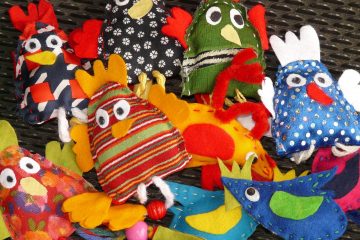You want to include more authentic videos in your class. The question becomes, what do you do with a TL video?
 Now, there have been several great posts offering options of activities to use with authentic video, like this one from Spanish Playground or this one from Bryan Kandel. My post, in particular, along with my session this weekend at the Central States Conference on the Teaching of Foreign Languages, is concerned with how you can develop a systematic viewing guide to make authentic film more comprehensible input for your language learners. This is the process I’ve developed, inspired by the wonderful work of Kara Jacobs and Elena López on the movie Canela, to fairly quickly and easily build entire lessons, units, or even semester curriculum from authentic video.
Now, there have been several great posts offering options of activities to use with authentic video, like this one from Spanish Playground or this one from Bryan Kandel. My post, in particular, along with my session this weekend at the Central States Conference on the Teaching of Foreign Languages, is concerned with how you can develop a systematic viewing guide to make authentic film more comprehensible input for your language learners. This is the process I’ve developed, inspired by the wonderful work of Kara Jacobs and Elena López on the movie Canela, to fairly quickly and easily build entire lessons, units, or even semester curriculum from authentic video.
But how?
Let’s take it a step at a time.
1. Select the clip.
First, of course, I have to choose what I’m going to use as my clip. Where does the video come from? There are a number of routes you could take. You could select a movie and make it your unit, the way Kara, Elena, and I did with Canela. Or you could look at your existing unit and find a clip that supports it, the way I did with Lola Aventuras from Plaza Sésamo. Either way, here at the beginning of the process, you’re not using the whole thing. Some of the clips I use that form the basis of a section of the viewing guide are less than 20 seconds. I don’t think I’ve created a viewing guide section on a clip longer than 2 minutes. What’s the defining element? I have two criteria:
- The clip is a unified scene in the movie or video (María pretends to bake a cake in her room; Lola encounters a monkey in the jungle).
- The clip contains useful vocabulary and/or structures that are a good basis for input and activities/tasks. In other words, the next step is…
2. Look to the end.
When deciding how to use a video, the process is the same for any other: backward design. So, I start by identifying and beginning the section in my guide with what I’m going to focus on. I ask,
What structures and vocabulary will my students be able to use from this, and how will they show me they can at the end?
Then it’s time for the next piece: What will get them from 0 to Can-Do? We start with the CI (comprehensible input).
3. Design the comprehensible input.
At first, I make no reference to the video clip at all. It was the inspiration for the entire lesson, but it doesn’t show up anywhere here at the beginning. My students don’t even see the viewing guide at this point. We’re starting at pure input: how can I introduce them to the targets in a way that’s engaging and acquisition-rich?
My preferred comprehensible input is usually a story. In the Year of the Death of Creativity, it was often deconstructing an authentic resource, like an infographic or even a picture, into a CI discussion. It could be a personalized discussion with students. Key elements:
- It has to be engaging,
- it has to be comprehensible,
- it has to focus on the targets.
An example? For the Lola Aventuras guide you’ll find at the bottom of this post, here’s a story I would tell to introduce my key targets.
In California, there is an amazing animal. He is not pretty. He is not green. He is amazing, and he is blue. His name is Gonzo.
Gonzo has a friend. His friend’s name is Kermit. Kermit is not blue. Kermit is green. Kermit is amazing, too. But Kermit and Gonzo are not alike in some way. Kermit is green, and Gonzo is blue. Gonzo is sad. He is not like Kermit. Poor Gonzo.
Gonzo has another friend. His friend is Miss Piggy. Miss Piggy is amazing, too. But Miss Piggy and Gonzo are not alike in some way. Gonzo is blue, and Miss Piggy is pink. Miss Piggy is pretty, too, but Gonzo is not pretty. Gonzo is sad. He is not like Miss Piggy. Poor Gonzo.
One day, Gonzo meets a new friend. Gonzo and Martian are alike in some way. The friend is blue. The friend is not pretty. The friend’s name is Martian. The friend is an alien. Gonzo and Martian are alike in some way! Martian is not only a friend! Martian is Gonzo’s brother!
Gonzo is so happy. Gonzo is not an animal. Gonzo is an alien. He has a family. Hurray for Gonzo!
4. Make a series of clip images with simplified text.
My next step is to screen-shot critical images from the clip and add simplified text to them to help students understand the main idea of what is going on. You’ll see in the guide below where this fits in during our lesson.
Is this a copyright violation? I’m so glad you asked. Not enough people are asking this question. (A teacher recommended to me this week that I copy novel chapters and send them home with my students.) In my unprofessional opinion, this is classic fair use, and here’s why.
- You’re using video legally obtained from the owner (because you are, right?) Either the company provided it free on YouTube or you bought the DVD. Do not use clips on YouTube uploaded by anyone except the copyright owner or someone who has permission from the copyright owner. Better to take the high road here.
- You’re not using the images for commercial gain or without credit. Because you’re not selling it or anything related to it on TeachersPayTeachers, right?
- The images you’re using represent an insignificant percentage of their artistic work in the video.
- Your use actually benefits the company, because by sharing the information with your students and other teachers, you’re effectively free advertising for their product.
If only the company that produced Canela would put it back into production, I know a whole lot of teachers who would snap up legally purchased copies of it. I’m sure they’d be thrilled to know I was drumming up so much business for their product.
5. Make the student guide.
You CAN do this yourself – after you’ve done it once or twice you can build AT LEAST an entire lesson plan worth of activities based on a clip a minute and a half long in a matter of half an hour (I did it this week!). I’ve detailed my process in my conference handout. Even simpler: Use File -> Make a copy to copy my Lola guide (below) and just change the details. Violà!
And then? Share your work for all to use! The more we share, the less we have to make up our own stuff, the more time we can walk in the woods with our kids, the happier everyone is! My “Lola” and Canela docs are on the spreadsheet at that link – where’s your creation?
Resources
Want to see how this looks and actually use it?
- Check out Kara’s post on her Canela guide and activities (and don’t leave her blog without subscribing to her updates!).
- Here’s my draft guide for Canela, though if you don’t have a copy of the movie it’s not going to do you any good (that’s the sound of my weeping you hear), as Canela is now off Netflix and out of production.
- This is my guide for a clip of Lola Aventuras to support an early language class unit on Mira Canion’s book El capibara con botas. These are the accompanying slides.
Conference Slides
For those interested in clicking through my presentations from #CSCTFL17, here is the elementary one. (It’s nearly identical to the secondary one but with references to Lola – still available – and not Canela – not available.)
4 Comments
Comments are closed.




[…] Sara-Elizabeth shares great tips about how to make a video guide. […]
[…] Voces InocentesWalkoutFUNAtlético San PanchoBee MovieCasi CasiEl Libro de la VidaFrosty, El Muñeco de NieveHappy FeetHorton y el Mundo de los QuiénThe Princess and the Barrio BoyReal Women Have CurvesRíoRío 2Rudolph, El Pequeño VenadoShrek I, II, IIIUna Aventura Congelada (Frozen)¡Viva Cuba! HISPANIC CULTURE IN THE U.S.BellaEntre Nos¡Gol! 5 steps to make a video viewing guide | Musicuentos. […]
Hello. I have been looking at your guide for Canela. Can you please let me know the starting times for each part of the movie that you have listed? Thank you so much.
Shannon Lewis
Hi Shannon, thanks for stopping by! I didn’t note the stop/start times on this document but you should be able to tell as you watch/show it. I may have noted the times on my guide I started to formalize before the DVD went out of print, so I’ll check that and get back to you via email.